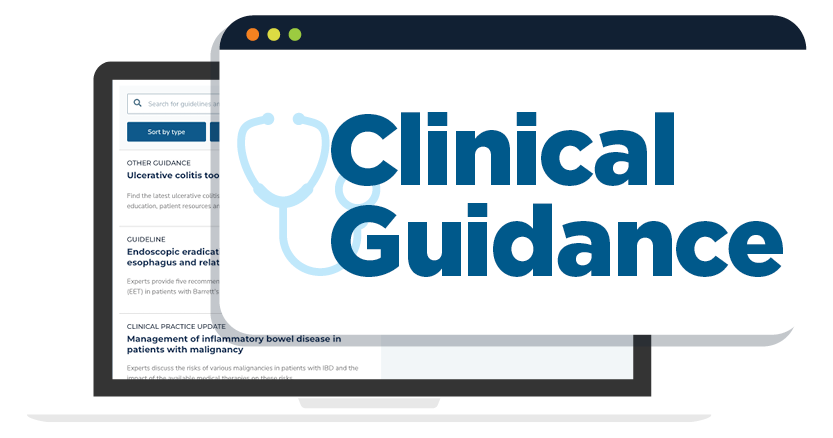- Asymptomatic patients with compensated cirrhosis do not require routine screening for PVT.
- Patients with cirrhosis with PVTs identified on Doppler ultrasound should undergo cross-sectional imaging with computed tomography or magnetic resonance imaging to confirm the diagnosis, evaluate for malignancy, and document the degree of lumen occlusion, clot extent, and chronicity.
- Patients with cirrhosis and PVT do not require a hypercoagulable workup in the absence of additional thromboemboli or laboratory abnormalities or family history suggestive of thrombophilia.
- Patients with cirrhosis and PVT with evidence of intestinal ischemia require urgent anticoagulation to minimize ischemic injury. If available, these patients should be managed by a multidisciplinary team, including gastroenterology and hepatology, interventional radiology, hematology, and surgery.
- Consider observation, with repeat imaging every three months until clot regression, in patients with cirrhosis without intestinal ischemia and recent (<six months) thrombosis involving the intrahepatic portal vein branches or when there is <50% occlusion of the main portal vein, splenic vein, or mesenteric veins.
- Anticoagulation should be considered in patients with cirrhosis without intestinal ischemia who develop recent (<six months) PVT that is >50% occlusive or involves the main portal vein or mesenteric vessels. Patients who have increased benefit of recanalization include those with involvement of more than one vascular bed, those with thrombus progression, potential liver transplantation candidates, and those with inherited thrombophilia.
- Anticoagulation is not advised for patients with cirrhosis with chronic (>six months) PVT with complete occlusion with collateralization (cavernous transformation).
- Patients with cirrhosis and PVT warrant endoscopic variceal screening if they are not already on nonselective beta-blocker therapy for bleeding prophylaxis. Avoid delays in the initiation of anticoagulation for PVT, as this decreases the odds of portal vein recanalization.
- Vitamin K antagonists, low-molecular-weight heparin, and direct oral anticoagulants are all reasonable anticoagulant options for patients with cirrhosis and PVT. Decision making should be individualized and informed by patient preference and Child-Turcotte-Pugh class. Direct oral anticoagulants may be considered in patients with compensated Child-Turcotte-Pugh class A and Child-Turcotte-Pugh class B cirrhosis and offer convenience as their dosages are independent of international normalized ratio monitoring.
- Patients with cirrhosis on anticoagulation for PVT should have cross-sectional imaging every 3 months to assess response to treatment. If clot regresses, anticoagulation should be continued until transplantation or at least clot resolution in nontransplantation patients.
- Portal vein revascularization with transjugular intrahepatic portosystemic shunting may be considered for selected patients with cirrhosis and PVT who have additional indications for transjugular intrahepatic portosystemic shunting, such as those with refractory ascites or variceal bleeding. Portal vein revascularization with transjugular intrahepatic portosystemic shunting may also be considered for transplantation candidates if recanalization can facilitate the technical feasibility of transplantation.
My AGA
AGA Journals
AGA University
AGA Research Foundation
AGA Job Board
My AGA

My AGA
Make the most of your AGA membership. Access your AGA profile, event registrations, member directory and more.
AGA Journals
AGA Journals
AGA’s peer-reviewed journals offer high-quality research on current advances in GI and hepatology: Gastroenterology, CGH, CMGH, TIGE and Gastro Hep Advances.
AGA University
AGA University
AGA University is your home for in-person meetings, webinars and other educational tools designed to help you stay current with advances in the GI field and earn MOC/CME.
AGA Research Foundation

AGA Research Foundation
The AGA Research Foundation funds young investigators who are committed to advancing gastroenterology. Through research, we can identify new treatment options for digestive disease patients.
AGA Job Board
AGA Job Board
AGA’s official job board, GICareerSearch.com, features new job postings daily. Employers can also post open positions.
MENUMENU
- Clinical Guidance
-
-

Clinical Guidance
Our clinical guidelines and updates help you make the best evidence-based decisions for your patients.
-
-
- Journals & Publications
-
-

Male doctor reading medical record while sitting at desk. Confident healthcare worker is working in his office. He is wearing lab coat in clinic. Journals & Publications
Latest research and ideas from the GI field.
-
- GastroenterologyThe premier journal in GI.
- Clinical Gastroenterology and Hepatology (CGH)The go-to resource in clinical GI.
- Cellular and Molecular Gastroenterology and Hepatology (CMGH)Impactful digestive biology research.
- Techniques and Innovations in Gastrointestinal Endoscopy (TIGE)Cutting-edge advances in GI endoscopy.
-
-
- Meetings & Learning
-
-

Speaker giving a talk in conference hall at business event. Audience at the conference hall. Business and Entrepreneurship concept. Meetings & Learning
Earn CME, MOC and improve your skills.
-
-
- News
- Membership
-
-

High angle shot of a team of doctors using a digital tablet together Membership
More than 16,000 professionals worldwide call AGA their professional home.
-
-
MENUMENU
- DDW
- Practice Resources
-
-

a medical salesman or administrator is sitting with a female doctor and running through a presentation . He is explaining something and referring to the computer screen in front of them on the desk. Practice Resources
Tools to maximize efficiency and help you deliver high-quality care.
-
- Practice ToolsCutting-edge resources to improve your patient care.
- New Technology & TechniquesThe latest innovations in GI.
- Quality & Performance MeasuresSupport to meet reporting requirements.
- ReimbursementTools to understand policies and advocate for reimbursement.
- GI Patient CenterBy specialists, for patients.
-
-
- Research & Awards
-
-

Shot of a female scientist in a laboratory working with a microscope. Research & Awards
Funding opportunities and other initiatives advancing discovery.
-
-
-
-
- Fellows & Early Career
-
-

Shot of a diverse team of doctors having a discussion Fellows & Early Career
Resources designed for early career gastroenterologists.
-
-



